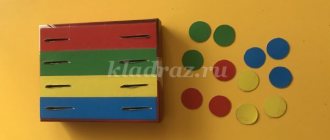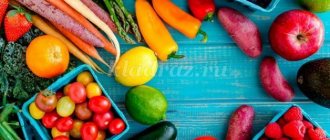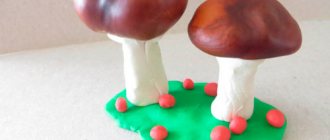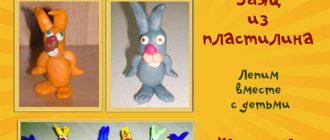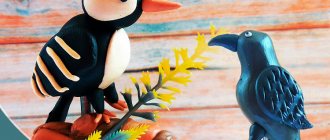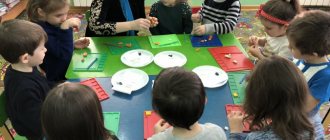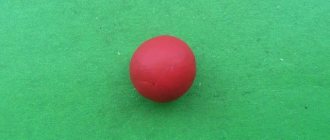Modeling fruits from plasticine
Another master class on plasticine modeling from our regular author Elena Nikolaeva.
Girls can feed their dolls not only with healthy vegetables, but also fruits , which are also worth learning how to sculpt from plasticine. Two parallel modeling classes will help children quickly navigate and distinguish vegetables from fruits. Of course, the list of such fruits is inexhaustible, so we will learn how to sculpt only a few (the most popular options).
sculpting fruits to coincide with the harvest festival, if we are talking about rural areas, or with the autumn school exhibition of crafts. This could be a standard labor lesson in elementary school or a training session in kindergarten. Even the youngest children can easily find objects to copy among the fruits, choose the appropriate color of plasticine from the box and create a craft, remembering what the object looks like.
In this sculpting lesson we will learn how to sculpt an apple, pear, plum, orange and grape. And then all that remains is to feed your dolls with foods rich in vitamins. For work you will only need blocks of plasticine and stack (photo 1).
How to make an apple from plasticine
To sculpt an appetizing apple, choose green (dark or light), yellow or red. Green may also be needed to form a leaf (photo 2).
The shape of an apple is a ball. Roll it out of red plasticine or another color. To make the fruit more colorful, you can add green or yellow barrels. In this case, prepare a small piece of green plasticine (photo 3).
Make a cake from green plasticine and attach it to the red fruit (photo 4).
Crush the green plasticine with your fingers, smoothing the surface of the ball. Roll the dough again in your hands to get a unique fruit (photo 5).
Make a hole (recess) on one side with the tip of the stack (photo 6).
Insert a brown stalk into the hole and attach a green leaf to make it clear that this is a ripe and appetizing apple (photo 7).
How to make a pear from plasticine
When sculpting a pear, we will not stop at one color, but will mix several suitable shades at once: red, yellow, orange, green and their various shades. Prepare several suitable pieces (photo 8).
Pull all the pieces into sausages (photo 9).
Intertwine and mix the sausages together to get an unusual multi-colored mass (photo 10).
Create a pear by shaping the soft mass into the correct shape, like a light bulb (Photo 11).
Also add a cutting and a leaf, after making a recess (photo 12).
How to make plums from plasticine
To sculpt plums, you can use lilac, purple, blue, green, yellow and other colors of plasticine. Choose any of them and knead (photo 13).
Make several small balls (photo 14).
Draw out the balls into oval pieces. Using a stack or toothpick, apply a longitudinal stripe to each fruit. Prepare very thin gray threads as cuttings (Photo 15).
Make several plums (photo 16). Cherry plums are also made in the same way, only the shape of the parts is better left round, apricots - to make them you will need orange plasticine.
How to make an orange from plasticine
Modeling an orange will not cause any difficulties for anyone. Initially, you should roll an orange ball (photo 17).
Place a small brown dot on the ball. Using a stack or toothpick, start making holes all over the surface of the ball (Photo 18).
Smear the entire surface to obtain a fruit with a thick, rough skin (Photo 19). The same method can be used to make tangerines, only the balls will have to be flattened a little during sculpting.
How to make grapes from plasticine
To sculpt a bunch of grapes, you will need two types of plasticine: for leaves and tendrils, and for berries. For example, it could be green and purple plasticine (photo 20).
Roll purple balls (Pic 21).
Make the balls more oblong. Attach them together to form a bunch of grapes (photo 22).
Pull the green plasticine into very thin strands to create antennae. And also prepare round cakes, from which cut out grape leaves in a stack (they are similar in shape to maple leaves) (photo 23).
Glue the stem, leaves, and tendrils to the brush to get very tasty and healthy food for dolls (photo 24).
Our set of fruits is ready (photo 25).
All together they look like real autumn wealth. And after work, the girls will be able to continue playing with their dolls and feed them.
See here for information on modeling vegetables from plasticine.
In order not to forget the address of the page and share with friends, add it to your social networks: Do you want to know news about competitions or master classes?
Tags: Food for dolls, Modeling
Attention! It is better to write urgent questions in the comments on the website (form at the bottom of the page) or, better yet, directly by email. There are no notifications about comments from the VKontakte form! This form is more for feedback. 
Your comment Cancel reply
Food for plasticine dolls: other ideas
We have collected enough ideas to make a doll kitchen filled with different products. You can sculpt not only from ball plasticine. but also from ordinary clay, as well as from polymer clay - this is how the toys harden and become like ordinary plastic figures.
Making food from plasticine with your own hands is quite easy. Check out our selection of ideas and get creative. Good luck!
Lesson summary for the senior modeling group
Topic: We have a garden, all the vegetables grow there.
Goal: To arouse interest in modeling.
Viewing the contents of the document “Lesson notes for a senior modeling group”
Lesson notes for the senior group
by sculpting
Subject:
We have a garden, where all the vegetables grow.
Target:
Arouse interest in sculpting vegetables. Learn to sculpt various shapes of vegetables (carrots, cabbage, pumpkin). Encourage to convey the characteristic features of each form. Be creative when doing work, use a stack. To foster respect for the work of people who grow vegetables.
Developmental environment:
Plasticine, boards according to the number of children, stacks, wet cloths, dummies of vegetables.
Content:
The teacher asks the children riddles:
An orange root sits underground, It stores a storehouse of vitamins, Helps children become healthier, What kind of vegetable is this, can you tell? (Carrot)
I tried all summer - I dressed and dressed, and when autumn came, I gave us our clothes. We put a hundred clothes in a barrel. (Cabbage)
There is a yellow ball in the garden, But it doesn’t run at a gallop, It’s like the full moon, The seeds in it are delicious. (Pumpkin)
— What vegetables do you like?
— Do you know that vegetables are not only tasty, but also healthy?
- How are they useful? ( They contain vitamins
)
The teacher examines cabbage and pumpkin with the children. Explains and shows children the technique of sculpting cabbage by pinching off pieces of plasticine and forming leaves from them. And we sculpt a pumpkin like this: a ball, slightly flattened and given shape using a stack.
At the end of the work, all vegetables are placed on the “beds”.
—Who can we treat with our harvest? (Children's answers)
kopilkaurokov.ru
